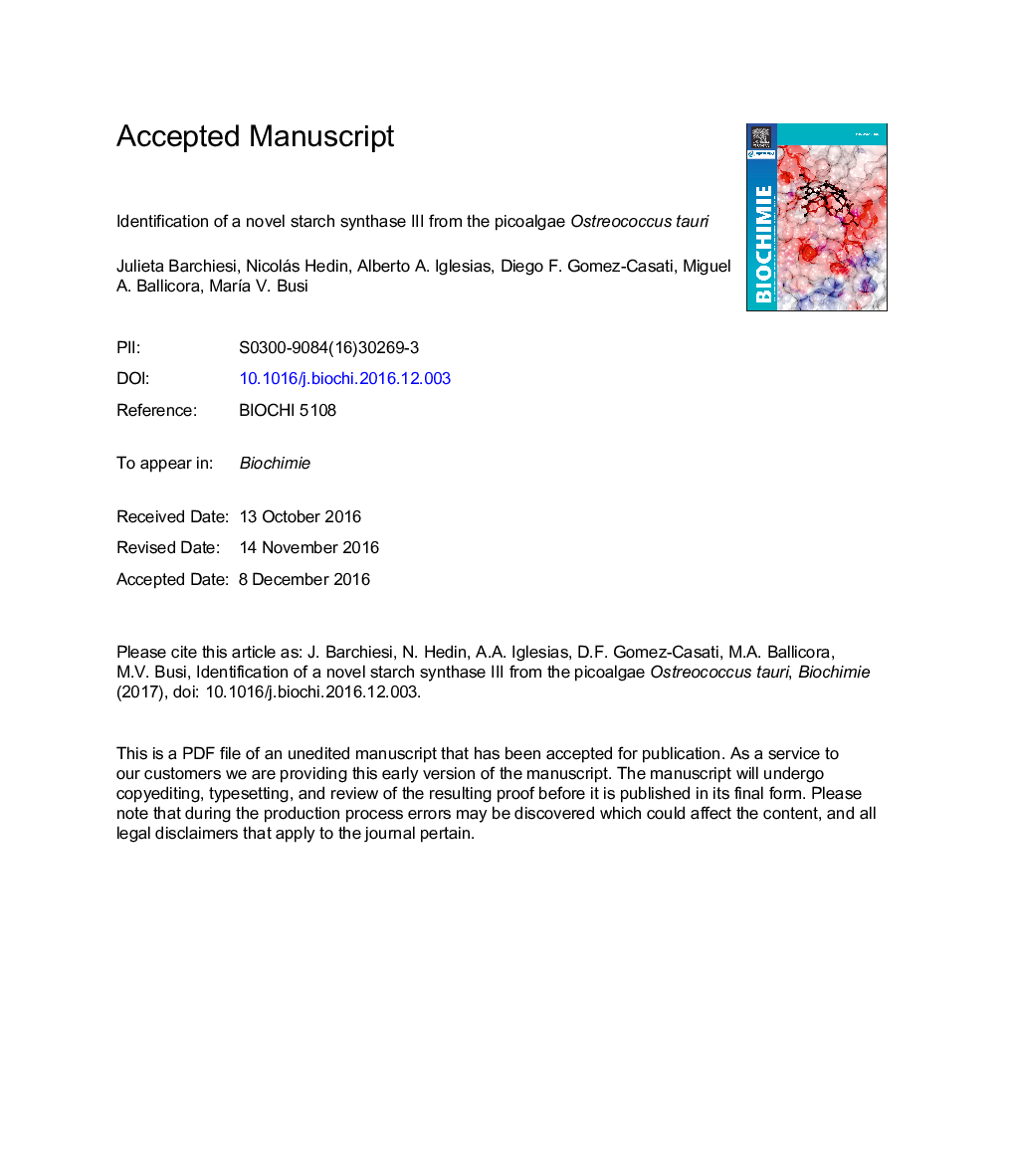| Article ID | Journal | Published Year | Pages | File Type |
|---|---|---|---|---|
| 5509030 | Biochimie | 2017 | 22 Pages |
Abstract
Hydrosoluble glycogen is the major energy storage compound in bacteria, archaea, fungi, and animal cells. In contrast, photosynthetic eukaryotes have evolved to build a highly organized semicrystalline granule of starch. Several enzymes are involved in polysaccharide synthesis, among which glycogen or starch synthase catalyze the elongation of the α-1,4-glucan chain. Ostreococcus tauri, accumulates a single starch granule and contains three starch synthase III (SSIII) isoforms, known as OsttaSSIII-A, OsttaSSIII-B and OsttaSSIII-C. After amino acids sequence analysis we found that OsttaSSIII-C lacks starch-binding domains, being 49% identical to the catalytic region of the SSIII from Arabidopsis thaliana and 32% identical to the entire Escherichia coli glycogen synthase. The recombinant, highly purified OsttaSSIII-C exhibited preference to use as a primer branched glycans (such as rabbit muscle glycogen and amylopectin), rather than amylose. Also, the enzyme displayed a high affinity toward ADP-glucose. We found a marked conservation of the amino acids located in the catalytic site, and specifically determined the role of residues R270, K275 and E352 by site-directed mutagenesis. Results show that these residues are important for OsttaSSIII-C activity, suggesting a strong similarity between the active site of the O. tauri SSIII-C isoform and other bacterial glycogen synthases.
Related Topics
Life Sciences
Biochemistry, Genetics and Molecular Biology
Biochemistry
Authors
Julieta Barchiesi, Nicolás Hedin, Alberto A. Iglesias, Diego F. Gomez-Casati, Miguel A. Ballicora, MarÃa V. Busi,
